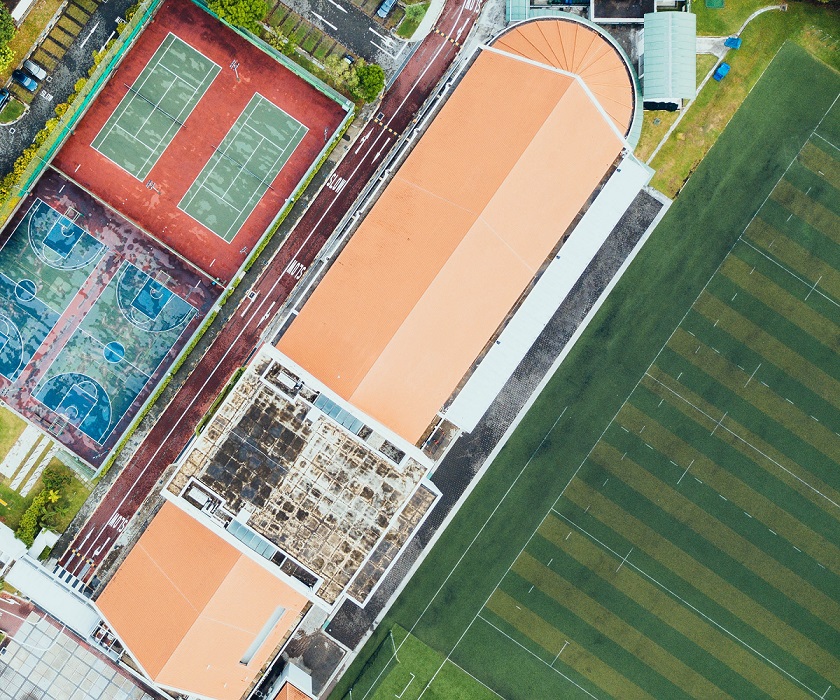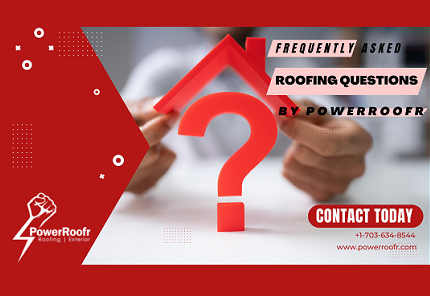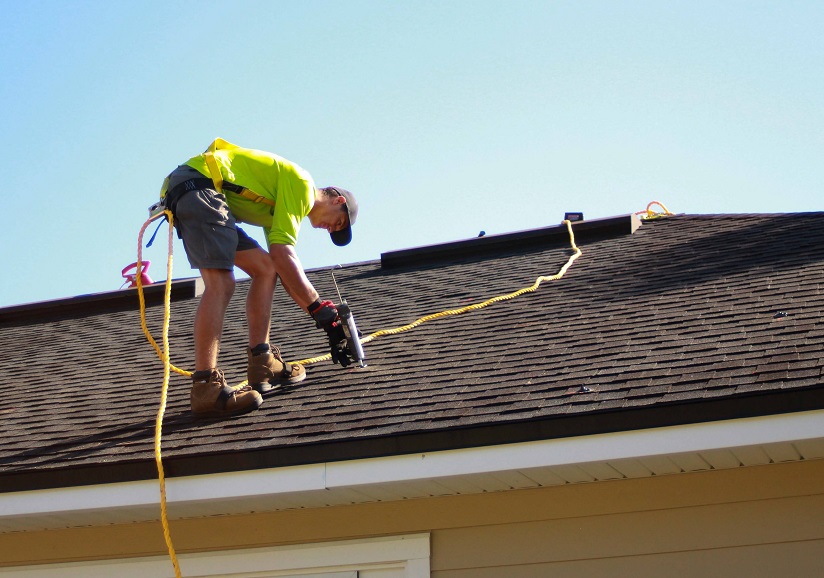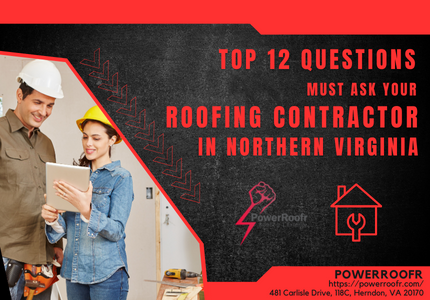Measuring the Cost of Roof Replacement in NOVA
Roof replacement is a significant investment for homeowners in Northern Virginia (NOVA). Properly estimating the cost of a roof replacement project is essential to ensure that the project stays within budget and meets the structural and aesthetic needs of the property. This comprehensive guide provides in-depth guidelines for accurately measuring the cost of roof replacement in the NOVA region. Factors such as materials, labor, local regulations, and geographical considerations play crucial roles in determining the overall cost. By following these guidelines, homeowners and professionals can make informed decisions and achieve successful roof replacement outcomes.
1. Roof Size and Pitch
The size and pitch of the roof are fundamental factors in estimating the cost of a roof replacement project. Larger roofs require more materials and labor, resulting in higher costs. The pitch of the roof also affects the complexity of the installation process, as steeper slopes may require additional safety measures and skilled labor. Precise measurements of the roof’s dimensions and pitch are essential to accurately assess the materials needed and the labor required.
2. Material Selection
Choosing the right roofing material is a critical decision that significantly impacts the cost of the project. Various roofing materials are available, each with its own price range and characteristics. Common options include asphalt shingles, metal, wood shakes, slate, and tile. Homeowners should consider factors such as durability, aesthetics, and climate compatibility when selecting a roofing material. The cost of materials and their installation requirements should be thoroughly researched to ensure an accurate cost estimate.
3. Labor Costs
Labor costs constitute a substantial portion of the overall roof replacement budget. In the NOVA region, skilled labor may be relatively expensive due to the high cost of living and competitive market. It is essential to obtain quotes from reputable roofing contractors and factor in the experience and expertise of the roofing crew. Experienced professionals may command higher wages, but their workmanship can significantly impact the longevity and performance of the new roof.
4. Tear-Off and Disposal
For projects that involve replacing an existing roof, the cost of tear-off and disposal must be considered. Removing old roofing materials and disposing of them properly can incur labor costs and waste disposal fees. Additionally, any equipment required for the tear-off process should be factored into the cost estimate.
5. Underlayment and Deck Repair
The condition of the roof deck is crucial for the success of the new roof installation. If the deck requires repairs or replacement, these costs should be included in the estimate. Proper underlayment is essential for moisture protection and can affect the overall cost. Ensuring that the roof deck is structurally sound and prepared for the new roofing material is vital for a long-lasting and secure roof.
6. Flashing and Ventilation
Proper flashing around chimneys, vents, skylights, and other roof protrusions is essential to prevent leaks and water damage. Adequate ventilation is also crucial for maintaining the health of the roof and the overall property. The cost of flashing materials, installation, and ventilation systems should be factored into the estimation process.
7. Permits and Inspections
Before commencing a roof replacement project in NOVA, homeowners should check local regulations to determine if permits are required. Permit fees and the cost of inspections should be accounted for in the budget. Adhering to local building codes and obtaining the necessary permits is essential to avoid potential legal and financial complications.
8. Geographical Factors
The geographical location of NOVA introduces specific considerations into the cost estimation process. The region experiences a range of weather conditions, including heavy rain, snow, and occasional storms. These factors may influence the choice of roofing materials and impact the overall cost. Choosing materials that are durable and suited to the local climate can contribute to the long-term success of the roof replacement project.
9. Contractor Reputation
Selecting a reputable and experienced roofing contractor is paramount to the success of a roof replacement project. While it may be tempting to opt for the lowest bid, quality workmanship, and proper installation are essential for the roof’s longevity and performance. Homeowners should research and interview multiple contractors, request references, and evaluate previous projects to make an informed decision.
10. Contingency Budget
Unforeseen issues or additional work may arise during the course of a roof replacement project. To mitigate potential financial strain, it is advisable to allocate a contingency budget. This additional fund can be used to address unexpected challenges or changes that may emerge, ensuring that the project stays on track and within budget.
Estimating the cost of a roof replacement project in Northern Virginia (NOVA) requires a comprehensive understanding of various factors. By meticulously considering roof size, materials, labor, tear-off, underlayment, flashing, permits, and other elements, homeowners and professionals can develop an accurate cost measurement. The unique geographical considerations of NOVA, coupled with the importance of contractor reputation and contingency planning, contribute to the overall success of the project. Following these guidelines empowers stakeholders to make informed decisions, achieve cost-effective outcomes, and ensure the durability and quality of the newly replaced roof.
Frequently Asked Roofing Questions | PowerRoofr
All roof replacement and installation questions are answered by our expert at PowerRoofr.
Your mind must be loaded with questions regarding roof replacement and installation. It’s natural to inquire before going for any exterior renovation at your property.
Full roof replacement is a crucial decision for property owners, but it can be overwhelming. Factors like material selection, contractor selection, and financial considerations can make the process complicated. PowerRoofr offers expert advice and answers to common FAQs to help make informed decisions about investing in a new roof.
With vast experience in roofing, siding, and windows, PowerRoofr has become a trusted contractor in Northern Virginia. Our competent roofer’s team has noted down the most common frequently asked roofing questions for homeowners to take the smartest decision for their roofs.
Question # 1 – When should I consider replacing my roof?
This question arises first in the mind. It is for sure a time to replace your roof if it is older than 25 years. However, roof replacement is considered when it has been damaged by storms or hail, deteriorates due to shingles curling or missing granules, or is less energy efficient than a newer one. Older roofs may not be as energy-efficient, leading to higher energy bills and lower home values. Inspecting the roof by a roofing contractor can determine if it needs replacement or repair. Replacing an outdated roof can save money on energy bills and improve the overall value of your home.
Question # 2 – Should I replace the shingles or the entire roofing system?
After knowing that the roof needs replacement, all homeowners consider partial replacement of roof shingles if possible. First, assess the overall condition of your shingles. If they are worn, damaged, or missing in isolated areas, a partial replacement may be sufficient. However, if there are widespread shingle damage, leaks, or significant wear and tear, it may be more beneficial to replace the entire roofing system.
Question # 3 – What are the different roofing options I have?
There are a variety of roof types, materials, and designs to choose from, and has their advantages and disadvantages. Metal roofing, tile roofing, and asphalt shingles are the most common of them all. The slope and complexity of the roof, the design of the house, the climate where it is located, and the cost of various roofing options are all factors that affect the best type of roofing.
Question # 4 – What is the cost of a new roof?
The cost of a new roof can vary significantly depending on several factors. Most homeowners can expect the average cost of a new roof in 2023 to be around $10,000 – 13,000 with 3 bedrooms and 2 bathrooms house. But this cost is just an estimate and it’s not fixed. Small townhouses must have less cost. As mentioned, the cost of a new roof depends on many factors which include, the type of roofing material, the roof’s accessibility, size, and complexity of your roof, the amount of roof decking that may need to be replaced, and the area where you live. Additionally, labor costs and any necessary repairs or modifications can also affect the overall price.
Question # 5 – What will be the life span of my new roof?
The lifespan of a new roof can vary depending on various factors, including the type of roofing material used, the quality of installation, weather conditions, regular maintenance, and other environmental factors. For instance, a high-quality asphalt shingle roof typically lasts around 30 years these days. However, many types of roofs last longer than 15 years; some can hold up well for 50 years or longer.
Question # 6 – How much time is needed to replace the roof?
A new roof installation can take days to weeks, depending on factors like the size, type, and removal of existing materials. In general, an average-sized roof of up to 3,000 square feet or less can be replaced in a day or two. However, more complex roofs or roofs with multiple levels may take up to three or four days to complete. Timing also depends on the size of the roofer’s team and weather conditions. Roofing is dangerous work, and bad weather such as a storm or on a hot, humid day may delay the installation process.
Question # 7 – How important the gutters are for a new roof?
Gutters are very important for a new roof. They help to protect your roof from water damage, which can lead to premature wear and tear. Gutters also help to prevent water from pooling around your foundation, which can cause erosion and damage to your home’s foundation. If you are getting a new roof, it is important to have gutters installed at the same time. At the time of roof installation choosing the right size and material for the gutter is equally important. This will help to protect your investment and extend the life of your roof.
Finally Yet Importantly!
Question # 8 – How Can I Hire A Professional Roofing Contractor NOVA?
To hire a professional roofing contractor in NOVA, get multiple quotes, check references, make sure they are licensed and insured, get everything in writing, and be clear about your expectations.
At PowerRoofr, We are confident that we can provide you with the best possible roofing experience in NOVA. We have a team of experienced and qualified roofers who are committed to providing high-quality workmanship at a fair price. We are also backed by a satisfaction guarantee, so you can be sure that you are making the right decision by choosing us.

Roof Inspection Checklist For Any Damage
What is the most important part of your house? While answering this question, we consider different rooms or the house’s interior as the most important component. Whereas, the correct answer to this question is the Roof. The roof gives structural support to the interior as well as to the exterior of the building. It provides shelter, saves you from weather elements, and provides insulation safeguarding any energy loss. Considering its vital role, the Roof inspection checklist will save it from wear and tear which in the long run can cause more inconvenience.
But before that, you should have a clear understanding of the major key points or roof inspection checklist which to be inspected to check your roof’s health. PowerRoofr has gathered all the key points which are necessary to consider for your roof’s life and strong support for your house.

Following are the roof inspection checklist key points:
1. Blistering of the Shingles
A blistered roof is just similar to the blisters that appear on the skin. It commonly occurs on asphalt shingle roofs as it is composed of different layers. During the installation process, moisture gets trapped between the layers, which on heating in the summer season comes out of the roof in form of gas. These gases escape, causing the shingles’ outer layer to bubble up or pop out. Hence, asking a professional roof contractor to help inspect your blistered roof is prevalent.
2. Poor Roof Ventilation
Poor roof ventilation is also a major key point of the roof inspection checklist to look for as far as the blistering of shingles is concerned. Apart from trapped moisture/water between the layers of the shingles, if your attic ventilation is not proper it will release the hot air up in the roof. This hot air causes the stuck moisture to evaporate as we discussed above, or it expands the roof creating blisters all across. Improper roof ventilation may create blisters or other serious problems affecting the roof’s life. Thus addressing this issue with the help of a professional roofer is the main checklist point.
3. Shingles Granule Loss
Granules are the outer layer of the asphalt shingles, providing them with color, texture, and a protective layer to withstand weather elements. Eroding or loss of granules are attached with asphalt shingles. Aging, hail damage, blistering, or other weather conditions can cause granule loss. The loss of granules exposed the asphalt-coated fiberglass sheet to sunlight, making them more vulnerable to cracking. You can check the granule loss from the naked eye but to know the exact damage, you make need to get your roof inspected by a certified roof contractor.
4. Curling/ Cupping of Shingles
Do your roof shingles are curling? If your answer is yes, you need to hire a contractor for a thorough roof inspection checklist. There are several reasons for this and inspecting them timely can save you money and enhances the roof’s life. Aging is one of the factors of curled shingles. As it gets old it losses its strength, curled up, and gives room to moisture/water to trap on those gaps. Overlooking this raises the problems like water leaks. Improper installation, poor ventilation, bad material used and layering of shingles are the common reasons for curled shingles and need to be addressed.
5. Organic growth – Algae, Moss
In areas where the climate is humid or the rainy season is heavier, the appearance of algae or moss on the roof surface is very common. As moss and algae love to stay in a cooler and shaded area and trap moisture, their appearance indicates that your roof has excessive water accumulation. Moss can curl up the shingles causing water incursion, moisture damage, and roof leaks. Trees trimming, debris removal, or getting your roof cleaned regularly by professionals are the easiest way to reduce the damage. However, a renowned roof contractor with a thorough roof inspection checklist is recommended to avoid serious issues caused by moss and algae.
6. Missing Shingles
What happens when you see some missing shingles on your roof? It might not look good to your eyes but other than affecting curb appeal it is doing some serious problems with your roof. All of the rainwater can go down against your rooftop if all of your shingles are in place. In this manner, all the moisture and water easily slip off rather than accumulating on your roof and penetrating your house building. On the other hand, if shingles are missing or broken all the water will then seep through your roofing components that are underneath the shingles.
7. Ridge Vent Blockage
Finding roof leaks can be challenging. A metal-capped ridge vent that extends the entire length of the roof is one potential leak source. It enables the hot attic air to vent out. Additionally, it enables cooler air to enter through the intake vents. Thus maintaining the airflow of the house. Ridge vents may become blocked for several reasons, such as tree leaves and other debris, animals building nests there, or a buildup of dirt and mud. Sometimes, poor installation or lack of maintenance can cause an issue. It is crucial to regularly clean your ridge vents to guarantee optimal airflow and guard against any issues.
8. Chimney Cracks
Unluckily, the most noticeable part of your roof also poses the most risk. A poorly managed chimney can seriously harm the rest of your home, particularly your roof. After a severe storm, do not forget to check the chimney. Heavy storms hurt roofs as well as chimneys very badly. Cracked or missing bricks, eroded mortar, and displaced caps are the red flags to be inspected immediately before it gives some troublesome problem to the roof.
9. Roof Deck
Your roof shingles might deteriorate before the time due to factors including strong winds, heavy rain, hefty snowfall, and UV rays, but the issues do not leave your roof like this. Your roof decking is a structural element that lies directly under your shingles and is also prone to damage. Even though a small amount of roof decking damage might not appear to be worrisome, if it is ignored, it can cause major structural problems and expensive repair costs. Since it is mostly made up of wood, water damage is one of the most devastating things a roof deck can experience.
10. Roofing Sealants Peel Off
Roof sealants are primarily used for two purposes, protecting and repairing roofs. Roof sealants can fix minor leaks before they cause more significant damage and can offer a protective seal against moisture and sun exposure. Various damp and moist places on the roof are infested with mold and other germs. Properly sealed roofs prevent moisture from penetrating your roof by making it waterproof. This lessens the danger of mold growth developing in undesirable areas.
If you come across any of the above-mentioned issues or are facing leakage problems or heavy storms and winds just hitting, inspect your roof with the help of PowerRoofr professional consultants. Call our expert at 703-634-8544 and get your roof inspected by us.






